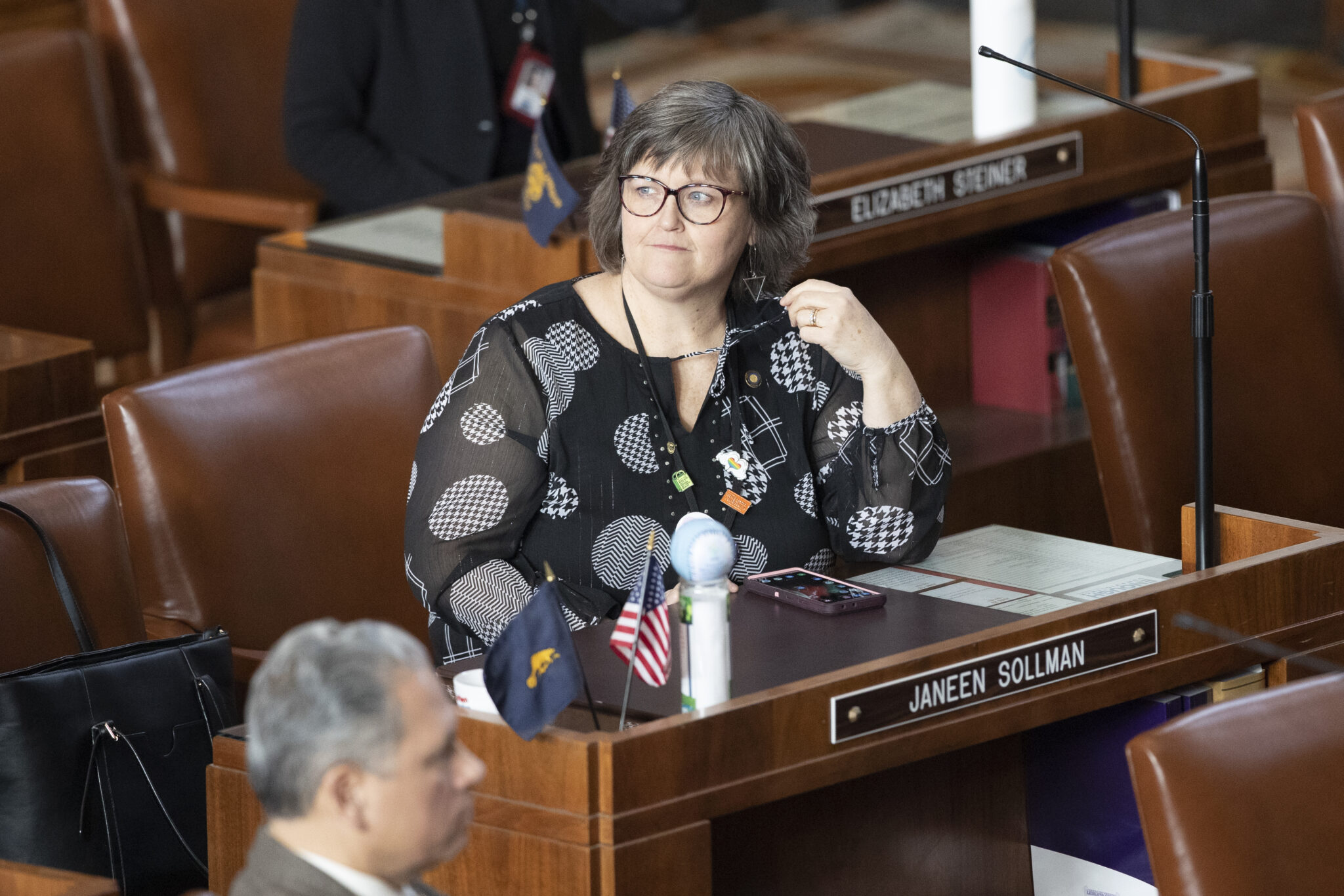Interior secretary meets with Klamath water users, tribes
Published 5:12 pm Friday, July 10, 2020

- From left, U.S. Rep. Greg Walden, R-Ore.; Bureau of Reclamation Commissioner Brenda Burman; Interior Secretary David Bernhardt; and U.S. Rep. Doug LaMalfa, R-Calif., talk Thursday on a field near Midland.
MIDLAND, Ore. – Interior Secretary David Bernhardt spent the day in Klamath Falls Thursday to see for himself what could be done to help find a long- term solution to water disputes in the Klamath Basin.
Since 2001, irrigators have experienced water shortages as the federal government has diverted water from the Klamath Project from agriculture to benefit endangered species.
Bernhardt toured the field of crosses on Del Fatti Lane, the site of the May 29 “Shut down and fed up” rally that drew thousands to the field following a 29.3-mile convoy of tractors, trucks, and vehicles from Merrill to Klamath Falls. After learning of the rally from Rep. Greg Walden, R-Oregon, and at the invitation of both Walden and Rep. Doug LaMalfa, R-Calif., Bernhardt spent a full day with water users and Klamath Tribes officials.
“Sometimes it’s important for us to evaluate the situation for ourselves and then try and drive change and that’s what we’re going to try and do,” Bernhardt told attendees of the invitation-only event.
Earlier in the day he visited separately with water users and the Klamath Tribes and U.S. Fish and Wildlife and expressed that they were great conversations. He talked of plans to return to Washington, D.C., with new information to share amongst the Department of Interior.
Bernhardt said there are some specific things that the department hasn’t looked at for a number of years that can be reassessed. He was wary of sharing specifics until that occurs.
“I don’t announce what we’re doing until I believe that it’s implementable because people for years have come out to places and given them pie in the sky and 10 years later, it’s exactly in the same place,” Bernhardt said.
With Bernhardt and officials nearby, rally co-organizers Bob Gasser held up a photograph of the rally
signed by President Donald Trump.
“The Secretary of the Interior is the man who can make the biggest difference in this Basin,” Gasser said. “Mr. Secretary, thank you for coming to our small part of the country. We may be small, but we’ve got a heart for this nation.”
Klamath irrigators on April 1 had been promised 140,000 acre-feet from the Klamath Project, less-than half of the demand. And because of drought, it had appeared that the delivery would be cut to 80,000 acre-feet. But last month the Bureau of Reclamation would deliver the original amount.
Gasser credited Bernhardt for the government’s decision.
“He saved this community … even though there are still a lot of farmers out there who have no water. There’s a lot of hurt still going on, but if he wouldn’t have done what he did, it really would’ve been horrific.”
Gasser said millions of dollars could have been lost because a lot of investments were made by farmers planning on the 140,000 acre-feet.
Gasser said he wasn’t expecting the visit by the top officials so soon following the rally.
“All I was hoping for was some more water as the summer went on,” Gasser said.
“It’s exciting because they’re taking this serious. “
Sixth-generation cattle rancher Mike Byrne had been anxious to see the secretary in the Basin, after taking many trips himself o Washington, D.C., over the years regarding western water litigation.
“We’re fighting to keep our water,” Byrne said. “The deed to the (cattle) ranch was signed by Ulysses S. Grant and it says we have all the water and mineral rights necessary for agriculture, and we’re trying to make those words come true.”
Scott Seus, a Tulelake farmer and co-organizer of the rally, shared praise for Bernhardt, Bureau of Reclamation Commissioner Brenda Burman, Walden, and LaMalfa for their visit.
“We’re not asking for a handout here,” Seus said. “We are asking for help to continue this generation of farming.
“The fact that you’re here today says, ‘We’re not going to be forgotten, not by this administration.”





